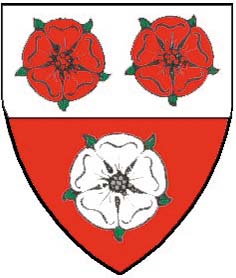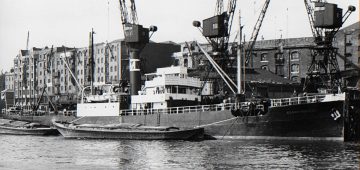Part 1: Roman Times to World War II
 Southampton is my favourite port of call and always has been for the last sixty years since my first visit in 1955. The glories of heath and forest in the New Forest were combined with harbour cruises around the port to see the giant Cunard ‘Queens’, the sharp bow of the fast ‘Blue Riband’ record breaker United States, and many more famous liners. The great advantage of Southampton over many other enclosed British docks is the ease of getting good vantage points e.g. Mayflower Park, Town Quay, Western Esplanade to see giant cruise and container ships sailing in and out at close proximity. I can remember walking along the lovely royal Pier, with every ship movement in and out posted daily on the windows of the Pier gatehouse, with wonderful additional information such as SSTQ (Starboard Side to Quay) or PSTQ (Port Side to Quay) for every ship arrival.
Southampton is my favourite port of call and always has been for the last sixty years since my first visit in 1955. The glories of heath and forest in the New Forest were combined with harbour cruises around the port to see the giant Cunard ‘Queens’, the sharp bow of the fast ‘Blue Riband’ record breaker United States, and many more famous liners. The great advantage of Southampton over many other enclosed British docks is the ease of getting good vantage points e.g. Mayflower Park, Town Quay, Western Esplanade to see giant cruise and container ships sailing in and out at close proximity. I can remember walking along the lovely royal Pier, with every ship movement in and out posted daily on the windows of the Pier gatehouse, with wonderful additional information such as SSTQ (Starboard Side to Quay) or PSTQ (Port Side to Quay) for every ship arrival.
Southampton Water is a deep, wide and drowned ria, blessed with a double tide that gives it plenty of room of manoeuvre for very large ships. This enables seafarers to guide the largest ships in the world into and out of port while working up speed or slowing down. The New Forest is an area of outstanding natural beauty, shaped by human use over many thousands of years. It was designated a National Park in 2005 and has an area of 224 square miles. This area that we have today in public perpetuity is mostly due to William I, who designated it as a royal hunting preserve in 1079. Marchwood Military Port, Hythe Pier and the huge Fawley oil refinery all come within the eastern flank of the New Forest.

The fame of Southampton has been made by its Docks, with the double tides caused by the Isle of Wight giving prolonged high water. The Southampton Maritime Museum, now part of the Sea City Museum near the Civic Centre, tells of the great liners and the last fateful voyage of the doomed Titanic. Southampton was badly hit by aerial bombing during World War ii, with the now bombed out Church of the Holy rood dedicated to the merchant seafarers of the city, and includes a memorial fountain to the five hundred local crew members who were drowned two hours after Titanic hit an enormous iceberg at twenty knots at 2340 hours on 14th April 1912.
Subscribe today to read the full article!
Simply click below to subscribe and not only read the full article instantly, but gain unparalleled access to the specialist magazine for shipping enthusiasts.






Comments
Sorry, comments are closed for this item